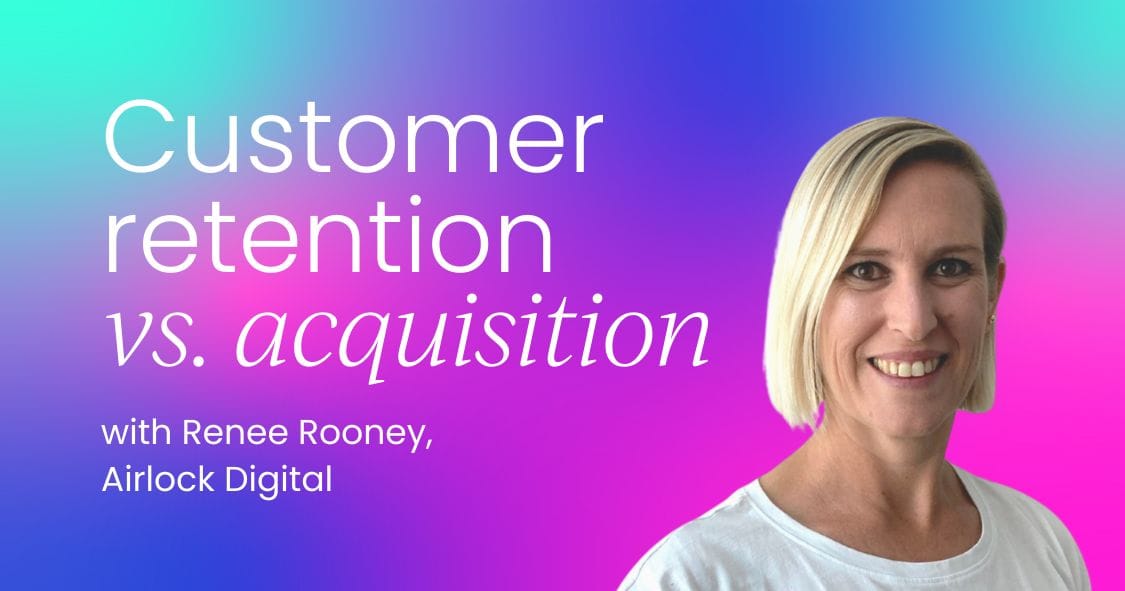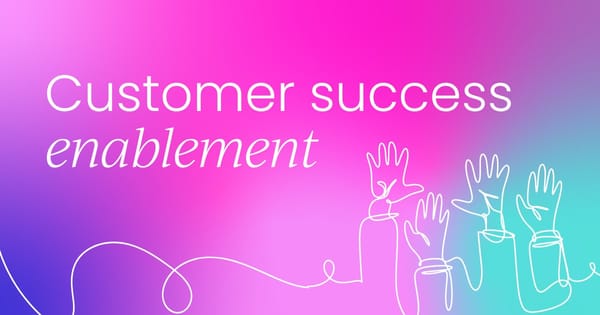Good teams have processes in place to make them better at their jobs. Great teams have enablement strategies to support and empower them.
You may have heard of “sales enablement” on your SaaS travels, but customer success enablement is the newest kid on the block. Much like its sales counterpart, CS enablement focuses on providing customer success teams with the tools, resources, and knowledge they need to excel in their jobs.
However, while both aim to educate and empower, CS enablement has a unique twist: it's all about equipping your customer success managers to become the ultimate champions for your clients' growth and satisfaction.
Customer success enablement accelerates learning, improves CSM effectiveness, and ensures faster customer value realization.
In this article, we’ll go into:
- What customer success enablement is
- Responsibilities of customer success enablement
- How it’s different from sales enablement
- Tips for getting started with customer success enablement
- Metrics to measure customer success enablement
- Challenges with customer success enablement
- Tools for customer success enablement
The definition of customer success enablement
It’s important to distinguish what customer success is, and what customer success enablement is before we start.
A customer success team’s role is to help clients realize the value of the product or service they’ve subscribed to. It’s to make this product useful and a part of the client’s daily life.
After the customer realizes value, a customer success manager (CSM) should strive to build on the customer relationship and turn them into an advocate. This process not only solidifies a positive brand image but has a huge influence on revenue generation.
Customer success, in essence, is about empowering clients to get ongoing value from your product. When customers effectively use, benefit from, and consistently engage with your solution, renewal becomes a natural outcome rather than a hurdle. This virtuous cycle of value realization and continued usage is the cornerstone of customer success.
Customer success enablement, however, is a sub-sect of a customer success function, one that focuses on equipping your team with the resources and technology to drive customer satisfaction. CS enablement is all about supporting your customer success managers, your CS Ops managers, your head of department – it gives them a fighting chance to execute their work successfully.
Responsibilities of customer success enablement
Any customer success enabler worth their salt will know that the core principles of a good enablement strategy will hit these points:
- Content: Providing CS teams with the knowledge they need about products, customer personas, success plays, and customer information.
- Tools: Equipping CS teams with the right platforms and software to manage their work effectively.
- Onboarding and training: Implementing structured programs for new hires and ongoing training for existing team members.
- Operational framework: Establishing systems for communication, reporting, and measuring the impact of enablement activities.
- Cross-functional collaboration: Fostering partnerships with other teams, especially product marketing and customer marketing.
How customer success enablement is different from sales enablement
While customer success enablement and sales enablement are both geared toward setting up their respective team members with the right education and resources, they’re both after different end goals.
Retention vs. acquisition
Where customer success’ main focus is retention and long-term loyalty and success, sales is focused on acquiring new customers and driving sales. As a result, the focuses of these two distinct enablement functions will differ.
For CS enablement professionals, this means that their programs need to prioritize skills, tools, and strategies that help teams manage ongoing relationships, ensure customers see the continuous product value, and reduce churn. Sales enablement professionals, on the other hand, focus on training teams to generate leads, close deals, and bring in new revenue.

Whole-company responsibility
CS enablement requires close collaboration across teams (sales, product, marketing) to meet customer needs throughout the customer lifecycle. Sales enablement tends to focus more narrowly on the sales team's needs to close deals. Where sales is more cross-functional, it typically only requires communication with marketing (and sometimes customer success) to win a sale.
CS enablement is typically required to strengthen cross-departmental relationships and create training that involves input from product, support, and other areas. On the other hand, sales enablement tends to be more internally focused on sales-specific skills like negotiation, deal management, and customer outreach.
Consultative expertise
A CSM’s job is two-fold: they need to have a blended knowledge of the customer’s needs and the product’s capabilities. Not only do they need to be a whizz at customer relationship management and relationship building, but they must know the product inside out, back-to-front to answer any client queries.
As a result, CS enablement must ensure their CSM colleagues have proper product training and are kept up to date with changes in the product roadmap. On the flip side, you’ll find that your sales enablers will focus more on equipping their sales team with negotiation techniques, objection handling, and closing strategies.
Ongoing support vs. initial engagement
CSMs need to provide continuous support to their clients, focusing on ensuring they continuously derive value from the product over time. As a result, CS enablement practitioners will need to offer continuous training and development around evolving customer needs, product updates, and long-term success strategies.
As sales teams are preoccupied with the initial stages of customer engagement and winning the deal, sales enablement professionals will focus more on initial onboarding and ramping sales teams quickly to generate immediate results.
Tips for getting started with customer success enablement
Before you get started with your enablement journey, it’s important to recognize that enablement isn’t a one-time training initiative – far from it. Instead, enablement is an ongoing strategic capability that equips CSMs to lead valuable customer conversations at every stage of the customer journey.
Every company’s path to building enablement is unique, and diagnosing where your organization is on this maturity curve is critical.
1. Start small
When implementing a customer success enablement program, you’ll likely discover that the sheer volume of potential resources, training materials, and processes can feel overwhelming. You’ll feel this even more keenly if you’re starting from scratch or without a dedicated team.
So what does “starting small” look like in practice?
- Identify priority areas: Focus on the most critical aspects of CS that your team needs to know to perform effectively. This might be understanding customer lifecycle stages or handling customer escalations.
- Quick wins: Aim to implement “quick wins” – small improvements or modules that deliver immediate value to CSMs and demonstrate the program’s potential. This could be a simple knowledge repository or a workshop on a particular skill that’s been identified as a gap.
- Iterative growth: As you continue to roll out training modules and resources, gather feedback from your CSMs and continuously refine and expand the program. For example, you could start with a simple onboarding process and gradually evolve it into a comprehensive multi-week program.
2. Build an enablement framework
A structured enablement framework is essential to help CSMs navigate the many demands of their role. Customer success managers are often bombarded with information – from product updates to customer strategies – so it’s important to have a framework that helps them focus on what matters most.
What should a framework include?
- Consistency and predictability: Establish regular and predictable training schedules or resources that the CSMs can depend on. For instance, monthly skill sessions or ongoing access to curated materials.
- Content organization: Use a central platform to organize best practices, workflows, and enablement materials. This central repository ensures that CSMs can find resources quickly and easily, reducing the friction caused by scattered information.
- Continuous learning: Ensure the framework is designed for ongoing education. Enablement is not a one-off process; the framework should provide avenues for CSMs to keep learning and sharpening their skills throughout their careers. It could involve periodic training modules, peer mentoring, or even refresher sessions.
3. Lean on your subject matter experts
CS enablement doesn’t exist in a silo. In fact, it’s an effort that involves cross-functional collaboration across different teams. What can do wonders to elevate your mission is to leverage subject matter experts (SMEs) and leadership throughout the organization.
How do you bring in others effectively?
- Internal SMEs: CSMs need to be knowledgeable in areas ranging from product updates to customer service best practices. Rather than expecting the enablement team to create all content from scratch, you can rely on SMEs from product, marketing, and sales to contribute their expertise.
- Cross-functional collaboration: Work with departments such as product management and marketing to align on consistent messaging and insights that CSMs can use. For example, product managers can deliver detailed training on new features, while marketing can provide customer success stories and use cases.
- CS leadership involvement: Bringing in senior CSMs and leadership to facilitate sessions not only gives the training more credibility but also provides new CSMs with a mentor-like figure they can learn from. Leadership involvement also ensures that the enablement efforts align with broader business goals.
4. Measure progress
Data is crucial in determining whether your enablement efforts are successful. But how can you measure enablement success?
- Compliance tracking: Use dashboards to track whether key customer lifecycle activities are being completed by CSMs. For example, you could track how frequently executive business reviews (EBRs) are conducted or whether adoption plans are created for customers. This helps leadership ensure that CSMs are meeting their benchmarks.
- Sentiment surveys: Regularly survey CSMs to assess how confident they feel in their abilities and how useful they find the enablement content. This provides qualitative feedback that can guide adjustments to your training programs.
- Customer outcomes: Ultimately, the success of enablement should be reflected in customer outcomes. Track metrics like gross renewal rate (GRR) and net revenue retention (NRR) to see if enablement efforts correlate with improved customer health and satisfaction.
5. Be prepared to iterate
The final point is the need for flexibility and continuous improvement. Enablement isn’t a static process – it must evolve based on changing business needs, customer demands, and CSM feedback.
But how do you build a culture of iteration?
- Feedback loops: Try to regularly gather feedback from your CSMs and leadership team to ensure that your CS enablement program stays relevant. For instance, if your CSMs are struggling with a new customer segment, why not introduce targeted enablement content to address those specific challenges?
- Pilot programs: Before you start rolling out any big initiatives, why not trial the program on a smaller scale – on a pilot basis with a select group of CSMs? This will allow you to refine your program based on CSMs’ feedback before scaling it across your wider organization.
- Stay agile: You’ll be well aware of how frequently business priorities change, whether it’s a new product launch, getting rid of one, or a shift in customer needs. Whatever it may be, make sure you’re prepared to adjust your enablement roadmap to reflect these changes. This could mean introducing new training modules on the fly or adjusting onboarding processes to account for new tools or customer strategies.
Metrics to measure customer success enablement
Measuring the impact of customer success enablement programs can be challenging. Where do you start, for one? Here are some approaches you can use to gauge the impact of your enablement efforts:
CSM time to value
Employee time to value, or “ramp time” refers to how long it takes for a new employee to reach full levels of productivity. It starts from their onboarding period all the way through to the point they perform their roles with ease and start generating value for the business.
Now this might seem like a tricky one to measure, but there are a few ways to measure how effective CSMs are. You can look at how long it takes for a CSM to have a full book of business, i.e. a portfolio of accounts. This means they’re managing an expected number of customer accounts independently, without needing additional support.
Alternatively, you could measure how often your CSMs complete key strategic touchpoints with customers. For example, you might decide your CSMs must complete a certain number of onboarding meetings, business reviews, or strategy sessions. You can then measure how long it takes for your new hire to complete these touchpoints independently, reflecting their readiness to handle customer-facing responsibilities.
Time savings
This sounds like a really simple measure but it’s a good’un that works. Deducing how much time you’ve saved from process improvement is a trusty metric for CS enablement. For instance, let’s say you’ve reduced the time it takes to complete renewal motions; you can then calculate the impact on overall efficiency.
Feedback and engagement
It’s important to track whether your enablement training content is digestible and whether participants can successfully recap key points after a session. Similarly, you should try to evaluate the effectiveness of your training through CSMs’ reactions, learning, behavior change, and the impact on your business’s bottom line.

Challenges with customer success enablement
Ensuring CSMs are set up in the best possible way isn’t always straightforward, despite how effortless CS enablers make it look! There can be several potholes on the road to enablement success, here are just a few of them:
Feedback
One challenge often faced by CS teams is gathering and relaying product feedback to the product development team. CSMs are on the frontline of hearing about customer pain points, and it can often feel like a lot to report on.
One way customer success enablement can alleviate this sticky point is by automating the feedback loop to ensure that valuable insights reach the product team, without being seen as just a means to avoid dealing with customer issues.
When CS enablement uses tools that tag and track product-related feedback, organizations can ensure that the product team receives comprehensive, real-time insights from customer success. This then fosters a collaborative environment where feedback is acted on more efficiently, ultimately improving the product and customer experience.
Introducing enablement too late
But didn’t we say earlier that you should start small with enablement? Yes, you shouldn’t run before you can walk.
That said, a lot of times companies grow at such a rapid pace, there isn’t the right infrastructure to support the necessary teams. By the time enablement is brought in, your CS team may have already developed its own processes and content, making it harder to unpick entrenched behaviors.
Introducing enablement early on helps establish best practices and a structured customer success process from the beginning. This way, enablement professionals can observe and document what works best in real-world situations, helping the organization develop a customer success function tailored to their needs.
Consistency
They say it takes 66 days to break a habit in your personal life, and the same can be said for business processes. When you’ve had CSMs marching to the beat of one drum for a substantial length of time, it can be incredibly hard to get them to abandon the legacy system and encourage them to follow your new model. Old habits die hard, and all that!
To smooth this transition try to:
- Highlight tangible benefits and demonstrate how new tools and processes improve daily workflows.
- Incentivize adoption by offering rewards for embracing the new system.
- Enlist internal champions to encourage and support their colleagues.
Tools for customer success enablement
Having a solid tech stack in place can transform your work-life efficiency. Here are some of our community’s favorite tools that help them manage learning and drive team success:
- Professional services automation (PSA) platforms like Mavenlink or Outreach.
- Customer success platforms like Gainsight or Catalyst.
- Support tools like Zendesk, Jira, or Confluence.
- Content management system (CMS) like Highspot, Seismic, or Showpad.
- Learning management system (LMS) like Learncore, WorkRamp
- Conversation intelligence tools like Gong or Chorus.
Re-familiarize yourself with the essentials of customer success
Looking for a well-rounded course that teaches the fundamental properties of customer success? Then look no further than our flagship course, Customer Success Core: Certified.
Accelerate your customer success career with the most cutting-edge and comprehensive curriculum around, and walk away with new knowledge, tried and tested strategies, and a competitive edge.
By the end of the course, you'll:
🧠 Understand the full breadth of the CS function.
💪 Be armed with all and only the most up-to-date and successful CS tactics and trends.
📈 Up-skill yourself in every core competency required for your role, and prove your strategic value.
🏆 Tap into the proven strategies used at some of the world’s most innovative and established brands.
🔖 Earn an official certification to boost your resumé and accelerate your career.



 Follow us on LinkedIn
Follow us on LinkedIn




